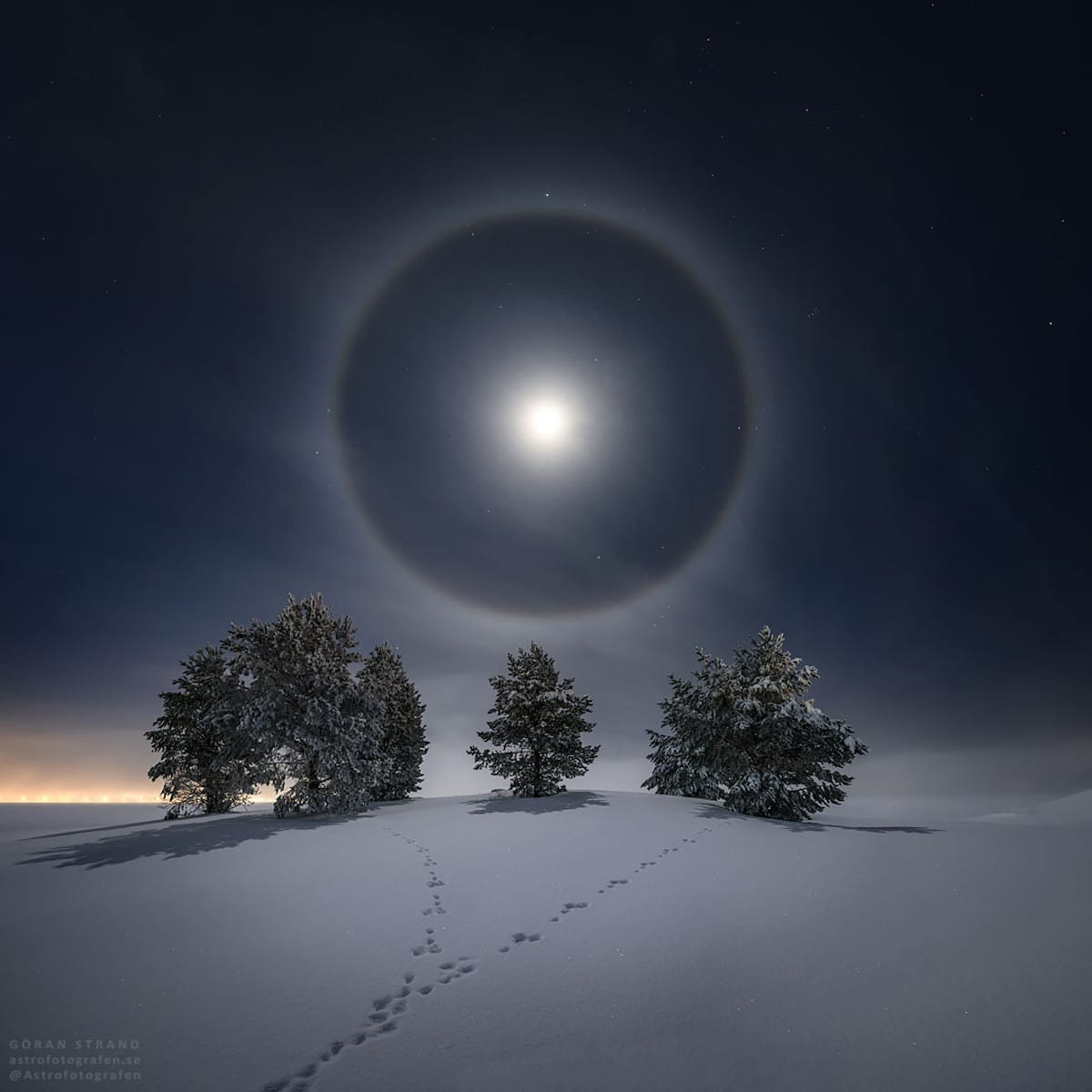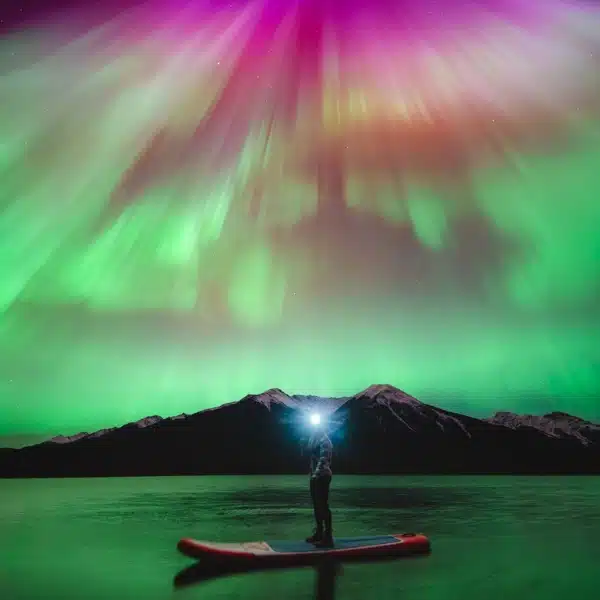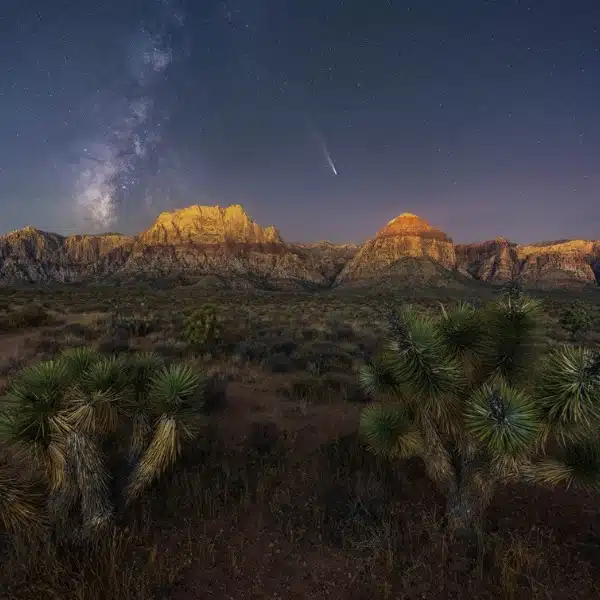
Photographer Göran Strand was on his way to the office in mid-December when, out in the horizon, he spotted a sun halo. “I didn't plan this photo,” he tells My Modern Met. “I picked up my camera and my drone and drove to a spot where I knew I would get the city and the halo together.” With the Sun at its highest position above the city of Östersund, Sweden, located at latitude 63°N, a few days before the winter solstice, Strand knew he had the shot of a lifetime. The resulting image was so mesmerizing, that it was even selected as Astronomy Picture Of the Day by NASA.
In Strand's picture, the sun halo shines above a bridge that connects Östersund and the island of Frösön. “Above Frösön you can see a small cloud of smoke leaving the top of the island,” explains the photographer. “That’s snow being produced by snow cannons at the local ski slope, Gustavsbergsbacken.” It's these cannons that make sun halos more common. “These tiny ice crystals produced by snow cannons are almost perfect in shape and have a tendency to be more likely to produce solar halos,” Strand says. “Solar halos are more frequently visible close to ski resorts that have snow cannons producing these perfect ice crystals.”
Strand, who became interested in astronomy when he was a kid, tried his hand at photography in the early 90s. First, he took to traditional landscape photography before mixing his two main passions and becoming an astrophotographer. While he has some sun halo pictures in his portfolio, he is a seasoned aurora borealis photographer, too.

After a few years photographing both, he says solar halos are easier to work with. “[They happen] during daytime and they stay in the same position. Northern Lights move all over the sky and can only be seen when it's dark. So with a solar halo I feel that I have more time figuring out an interesting composition to make a more exciting image,” he admits.
To capture the Northern lights and other sky phenomena that happen around his hometown, which is very close to the Arctic Circle, Strand has also learned how to stay warm while working. “As long as you're stationary, you can never have too much clothes on you, so plenty of warm clothes and something warm to eat or drink is a good idea,” he advises. “Your fingers are usually the trickiest part to keep warm so I try to keep my gloves on as much as possible. And when not working it's a good idea to have your gloves on and your hands in your jacket pockets to keep both the hands and gloves warm.”
You can stay up to date with Strand's work by following him on Instagram. You can also visit his web store, where he offers prints of his mesmerizing sun halo images, as well as other pieces of astrophotography.
Photographer Göran Strand was on his way to the office in mid-December when, out in the horizon, he spotted a sun halo. The picture he took was selected as Astronomy Picture Of the Day by NASA.
A seasoned astrophotographer, he has captured the Northern Lights and other sky phenomena that happen around his hometown of Östersund, Sweden.

“With a solar halo I feel that I have more time figuring out an interesting composition to make a more exciting image,” he says.




Göran Strand: Website|Instagram|Facebook
h/t: [NASA]
My Modern Met granted permission to feature photos by Göran Strand
Related Articles:
Skier Uses Smartphone to Capture Incredible Light Halos in the Swiss Alps
Photographer Uses Drone to Create a Spectacular Light Halo Atop St. Michael’s Tower
Long Exposure Photos Capture Drones “Painting” Light Halos Over Mountains
Most Enchanting Aurora Borealis Photos From the Northern Lights Photographer of the Year Contest





















































































